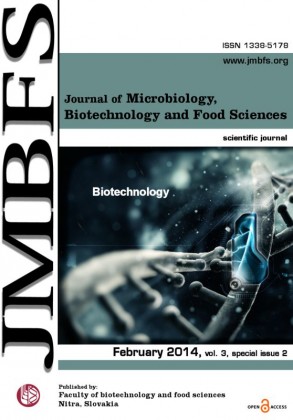BACTERIOPHAGE ENDOLYSINS AND THEIR USE IN BIOTECHNOLOGICAL PROCESSES
Keywords:
bacteriophage endolysins, EAD, CBD, applicationsAbstract
Bacteriophage endolysins are peptidoglycan hydrolases, produced in the lytic system of bacteriophage in order to lyse host peptidoglycan from within and release virions into the environment. Phages infecting Gram-positive bacteria express endolysin genes with the characteristic modular structure, consisting of at least two functional domains: N-terminal enzymatically active domain (EAD) and C-terminal cell wall binding domain (CBD). CBDs specifically recognize ligands and bind to the bacterial cell wall, whereas EAD catalyze lysis of the peptidoglycan bonds. The reveal of endolysin modular structure leads to new opportunities for domain swapping, construction of chimeras and production of specifically engineered recombinant endolysins and their functional domains with the diverse biotechnological applications from without, such as in detection, elimination and biocontrol of pathogens, or as anti-bacterials in experimental therapy.Downloads
Download data is not yet available.
Downloads
Published
2014-02-01
How to Cite
Tišáková, L., & Godány, A. (2014). BACTERIOPHAGE ENDOLYSINS AND THEIR USE IN BIOTECHNOLOGICAL PROCESSES. Journal of Microbiology, Biotechnology and Food Sciences, 3(special issue 2 (Biotechnology), 164–170. Retrieved from https://office2.jmbfs.org/index.php/JMBFS/article/view/7646
Issue
Section
Biotechnology
License
Copyright (c) 2014 Lenka Tišáková, Andrej Godány

This work is licensed under a Creative Commons Attribution 4.0 International License.
All papers published in the Journal of Microbiology, Biotechnology and Food Sciences are published under a CC-BY licence (CC-BY 4.0). Published materials can be shared (copy and redistribute the material in any medium or format) and adapted (remix, transform, and build upon the material for any purpose, even commercially) with specifying the author(s).

